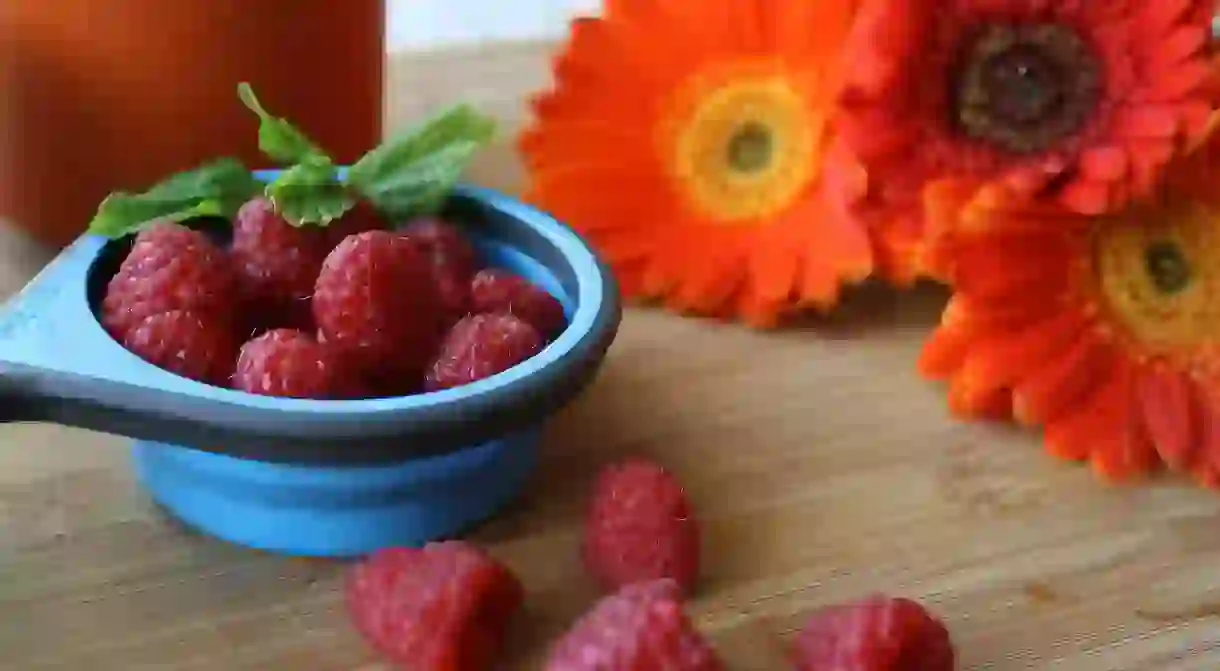10 Russian Superfoods You Need in Your Life

The superfood mania around the world is growing by the day. Although it seems that we are making new discoveries to add into smoothies in search of the healthiest meal on earth, most of these foods have been around for centuries. Here are the ones to look out for in Russia.
Buckthorn
Buckthorn grows all over Russia and mainly in Siberia, and is packed with all the goodness you’d expect of a superfood. These berries are filled with vitamins and lots of antioxidants – some sources even suggest that buckthorn contains almost every vitamin known to science. The best way to consume these berries is raw, but they can also be purchased as a juice, oil or balm. Luckily, buckthorn has a low calorie count on its own, so it can be mixed with sugar to add sweetness.

Buckwheat
Buckwheat is as popular a side dish as rice and potatoes, but unlike its carb-rich counterparts is a more slimming choice. Moreover, buckwheat contains a selection of vitamins, calcium, iodine, iron and phosphorus. This grain is an excellent choice for people with digestion problems, high cholesterol levels and for those who want to loose some weight. In Russia buckwheat can be found in every supermarket, sold in sachets that just need to be boiled before being ready. Simple and healthy.

Turnips
Turnip was one of the vegetables widely available in Russia for centuries – during tsarist times it was in fact the most common vegetable on the table, as it was easy to grow. It is filled with vitamins, such as A,C and K, and contains folic acid, which is recommended for pregnant women. Turnips can be served baked or braised. For a slightly more flavourful dish, the turnip is boiled, the middle carved out, stuffed with mince meat and baked under cheese.

Farro
A whole grain like rice or quinoa, but one with more fibre and protein than any of the less healthy alternatives. Because of its high fibre properties, farro is good for digestion and for cardiovascular health, and is a suitable grain for people on a diet. Farro has become a common ingredient in bread, porridges, soups, and is a healthy choice of side dish. Though farro is filled with goodness, it remains a type of wheat, so is not suitable for those on a gluten-free diet.

Tvorog (quark)
Any Russian will tell you that the cottage cheese or curd cheese you get overseas is no the same as the beloved tvorog. It is a dairy product that can be found in every second shopping basket. For one, it has been around since time immemorial and remains one of the major components of a Russian diet. The greatness of tvorog is in its high protein and low calorie count, making it a healthy diet product, rich in calcium. Of course, tvorog can be sweetened with honey, sugar etc making it less useful diet-wise.

Urbech
Although most of superfoods named in the article can be relatively easy found outside of Russia, urbech does not have the same popularity. Originally from Dagestan, urbech is a 100% natural paste made by grinding together raw seeds and nuts. There is no thermal treatment of the paste, so it retains all the raw goodness of the products. Urbech contains more protein than meat and more calcium than dairy. It’s highly recommended for people suffering from diabetes and heart disease. As if that weren’t enough, urbech is also absolutely delicious, making it a healthy replacement for desserts.

Flaxseed
Flaxseed needs no special introduction. In Russia it is widely available and can be found for a very fair price, unlike many exotic superfoods. Flax is a great addition to meals, because of its high fibre content – just a spoonful in porridge, cereal or salad can keep you full for hours. Flaxseed is a great source of healthy fats, such as omega-3 and omega-6, and is great for cleansing the body of toxins and helping the digestive system.

Cowberry
Another wonderberry to add to the list. Cowberry is a well-known home remedy for colds and infections, because of its antiseptic properties. It’s not just a housewife’s tale – cowberry beverages are often recommended by doctors, but probably only in Russia. It is usually found in mors, a berry-based juice, and in marmalade. Fresh cowberries can also keep well in a fridge, all you need to do is place them in a jar and cover with water. When winter comes, enjoy a cup of tea with mint and cowberry.

Sour cabbage (sauerkraut)
Despite the unappetising name, sour cabbage, known as sauerkraut elsewhere in Europe, is a Russian household superfood. It is packed with vitamin C and contains other vitamins, but especially vitamin U. This vitamin is great for the digestive system and aids in helping with stomach ulcers. Sour cabbage is also packed with iodine. Some research suggests that sour cabbage prevents the development of cancer – that’s one powerful pickle. In Russia it’s quite easy to get in a shop, but also not impossible to make at home, although will take a few days before it’s ready.

Rose hip
Rose hip is the red or orange fruit of the rose plant – not something that looks particularly edible, but it is. Rose hip and the seeds are used together to make medicine, but it can be also used in cooking. The plant is admired for its high content of vitamin C, great to boost the immune system of the body before winter, a function naturally appreciated in the cold Russian winters. As the best season for rose hip is end of August-September, the fruit should be picked before the first colds come in.














